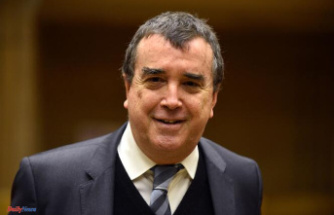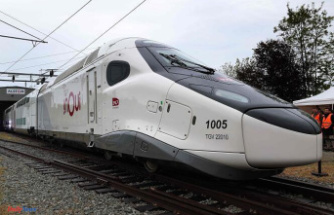The economic performance of the USA continues to shrink - despite good prospects on the labor market. Technically, the country is in recession. However, the head of the US central bank does not want to hear anything about a broad-based economic downturn.
Surprisingly, the US economy continued its downswing in the spring and thus slipped into a recession. Economic output (GDP) fell by 0.9 percent on an annualized basis in the second quarter, according to the Department of Commerce based on an initial estimate. However, experts had expected growth of 0.5 percent. Gross domestic product fell by 1.6 percent in the first quarter.
The economy has slipped into a so-called technical recession. This is what experts talk about when economic output shrinks for two quarters in a row. "The growth of the US economy is likely to increase again somewhat in the current quarter and the final quarter of the year," said Fritzi Köhler-Geib, chief economist at the state development bank KfW. "However, the persistently high inflation rates and the ongoing interest rate hikes by the US Federal Reserve are increasingly putting pressure on consumption."
Economist Bastian Hepperle from the Hauck Aufhäuser Lampe private bank pointed out that the employment trend in particular was not at all consistent with a recession. "But the economic downturn is on its way: high inflation rates, rising key interest rates and significantly worse financing conditions are having a negative impact." That spoils the mood for consumption, and companies cut their investment and hiring plans. "The prospects are anything but rosy."
The labor market in the USA has continued to be strong recently. Job growth averaged 456,700 jobs per month in the first half of the year. But the danger of a downturn has increased. There are already signs of weakness in home construction and home sales. In addition, construction investments fell significantly, and there was also a sharp reduction in inventories. In addition, consumer confidence has weakened in recent months, and economic sentiment has already weakened.
Inflation, meanwhile, has shot up to 9.1 percent, the highest since late 1981. The increased costs of energy, food and housing are weighing on the wallets of many US citizens and reducing their purchasing power. Because of the persistently high inflation, the US Federal Reserve therefore raised the key interest rate in another sharp step by 0.75 percentage points to 2.25 to 2.50 percent on Wednesday. Some experts now fear that the Fed's jumbo steps will put the brakes on interest rates too hard and could stall the economy as a result.
Thomas Gitzel, Chief Economist at VP Bank, assumes that the US Federal Reserve will remain calm. The US central bank left no doubt that, despite the existing economic risks, it would continue to hike interest rates. "The Fed will therefore continue to noticeably raise the key interest rate in the current year - despite the two-fold fall in GDP," estimates Gitzel. However, due to the decline in construction investments, another interest rate hike of 75 basis points in September is probably off the table.
US Federal Reserve Chairman Jerome Powell admitted on Wednesday that it would not be easy to achieve a soft landing for the economy. "But I don't think the economy is in recession," he added. There can be no talk of a broad-based economic downturn. Powell reiterated that an interest rate level of 3 to 3.5 percent at the end of the year was a desirable monetary policy level, at which point the economy would already be slowed down slightly. After that, the Fed signaled a slower pace.












